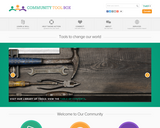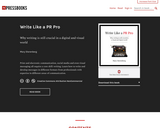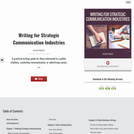
The Community Tool Box is a free, online resource for those working to build healthier communities and bring about social change. Our mission is to promote community health and development by connecting people, ideas, and resources. The Community Tool Box is a public service developed and managed by the KU Center for Community Health and Development and partners nationally and internationally. The Tool Box is a part of the Center’s role as a designated World Health Organization Collaborating Centre for Community Health and Development.
Professors and instructors from various disciplines use the Community Tool Box as a resource for their teaching. The Tool Box is often used as course text in the fields of public health, community psychology, nursing, social welfare, and other applied fields.
Chapter 1. Our Model for Community Change and Improvement
Chapter 2. Other Models for Promoting Community Health and Development
Chapter 3. Assessing Community Needs and Resources
Chapter 4. Getting Issues on the Public Agenda
Chapter 5. Choosing Strategies to Promote Community Health and Development
Chapter 6. Communications to Promote Interest
Chapter 7. Encouraging Involvement in Community Work
Chapter 8. Developing a Strategic Plan
Chapter 9. Developing an Organizational Structure for the Initiative
Chapter 10. Hiring and Training Key Staff of Community Organizations
Chapter 11. Recruiting and Training Volunteers
Chapter 12. Providing Training and Technical Assistance
Chapter 13. Orienting Ideas in Leadership
Chapter 14. Core Functions in Leadership
Chapter 15. Becoming an Effective Manager
Chapter 16. Group Facilitation and Problem-Solving
Chapter 17. Analyzing Community Problems and Solutions
Chapter 18. Deciding Where to Start
Chapter 19. Choosing and Adapting Community Interventions
Chapter 20. Providing Information and Enhancing Skills
Chapter 21. Enhancing Support, Incentives, and Resources
Chapter 22. Youth Mentoring Programs
Chapter 23. Modifying Access, Barriers, and Opportunities
Chapter 24. Improving Services
Chapter 25. Changing Policies
Chapter 26. Changing the Physical and Social Environment
Chapter 27. Cultural Competence in a Multicultural World
Chapter 28. Spirituality and Community Building
Chapter 29. The Arts and Community Building
Chapter 30. Principles of Advocacy
Chapter 31. Conducting Advocacy Research
Chapter 32. Providing Encouragement and Education
Chapter 33. Conducting a Direct Action Campaign
Chapter 34. Media Advocacy
Chapter 35. Responding to Counterattacks
Chapter 36. Introduction to Evaluation
Chapter 37. Operations in Evaluating Community Interventions
Chapter 38. Some Methods for Evaluating Comprehensive Community Initiatives
Chapter 39. Using Evaluation to Understand and Improve the Initiative
Chapter 40. Maintaining Quality Performance
Chapter 41. Rewarding Accomplishments
Chapter 42. Getting Grants and Financial Resources
Chapter 43. Managing Finances
Chapter 44. Investing in Community Resources
Chapter 45. Social Marketing of Successful Components of the Initiative
Chapter 46. Planning for Sustainability
Sample syllabi are also available: https://ctb.ku.edu/en/teaching-with-the-community-tool-box
- Subject:
- Applied Science
- Business and Communication
- Communication
- Health, Medicine and Nursing
- Public Relations
- Social Science
- Social Work
- Sociology
- Material Type:
- Reading
- Textbook
- Author:
- Center for Community Health and Development at the University of Kansas
- Date Added:
- 03/13/2019

